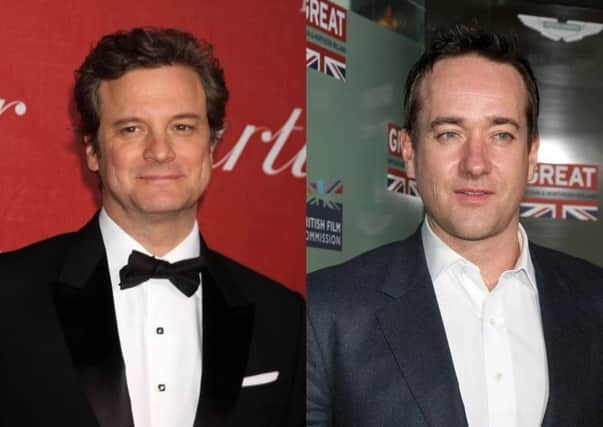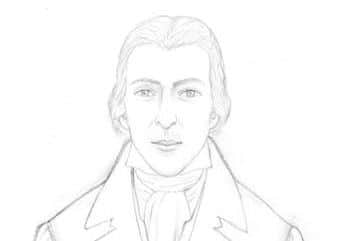REVEALED: What Jane Austen's Mr Darcy should REALLY have looked like


Especially the ‘tall, dark and handsome’ bit.
That’s right, Mr Darcy has been an object of female desire for generations, but that could change after the first historically accurate portrait of the celebrated English author’s fictional character was unveiled today, following research by leading academics.
All of which begs the question: how would the Pride and Prejudice heartthrob really have looked?


Advertisement
Hide AdAdvertisement
Hide AdWell, sorry to break this to you ladies, but let’s just say that the most admired and revered romantic leading man in literary history is no Colin Firth.
Indeed, the new portrait paints a very different picture of the literary heartthrob when compared to modern day TV depictions, portrayed by Hollywood actors such as Firth, Elliot Cowan and Matthew MacFadyen.
The research reveals that Jane Austen’s fictional character would have had sloping shoulders, powdered white hair, a long nose, pointy chin and a pale complexion.
The mission to discover the real Mr Darcy was commissioned by TV channel Drama to celebrate Jane Austen Season, which starts for Valentine’s Day on Sunday.


Advertisement
Hide AdAdvertisement
Hide AdThe study, carried out by John Sutherland, Lord Northcliffe Professor Emeritus of Modern English Literature at University College London and Amanda Vickery, Professor of Early Modern History at Queen Mary University of London, highlights how the qualities considered attractive have dramatically changed over the past two centuries.
Academics conducted a month-long study, investigating Austen’s personal life and relationships, drawing conclusions on who may have been the inspiration for Mr Darcy.
Researchers looked into the existing descriptions and illustrations of the character, along with the socio-economic and cultural factors that would contribute to Darcy’s background, appearance and lifestyle.
Leading artist Nick Hardcastle took the academic research and brought the descriptions to life in a series of unique illustrations.
Advertisement
Hide AdAdvertisement
Hide AdMr Darcy’s white powdered hair is reflective of the norms of the Austen era, with mid-length hair favoured over the shorter crop of today.
The illustrations highlight Darcy’s pale complexion, a sign of wealth and privilege, and his long oval face shape. In the late 1790s, square jaws were practically unheard of amongst the upper classes, with the pointy chin and small mouth evident on Mr Darcy very common features of the gentlemen of the era.
Strong legs were an attractive and important feature to females of the time, with well-modelled thighs a sign of virility, a good fencer and horseman.
The real Mr Darcy would also have been akin to many of the landed gentry of the time, with slim sloping shoulders. A muscular chest and broad shoulders was the sign of a labourer, not a gentleman.
Advertisement
Hide AdAdvertisement
Hide AdProfessor John Sutherland says: “There are only scraps of physical description of Fitzwilliam Darcy to be found in Pride and Prejudice; he is our most mysterious and desirable leading man of all time.
“What’s fantastic about Jane Austen’s writing is that Mr Darcy is both of the era and timeless.
“Our research for TV channel Drama’s ‘Jane Austen Season’ shows how Austen herself envisioned Mr Darcy, however the literature leaves space for the reader’s imagination to create their own Darcy and bring their own fantasies to the storyline.”
Professor Amanda Vickery says: “As Austen wrote Pride and Prejudice in the 1790s, our Mr Darcy portrayal reflects the male physique and common features at the time.
Advertisement
Hide AdAdvertisement
Hide Ad“Men sported powdered hair, had narrow jaws and muscular, defined legs were considered very attractive. A stark contrast to the chiselled, dark, brooding Colin Firth portrayal we associate the character with today.”